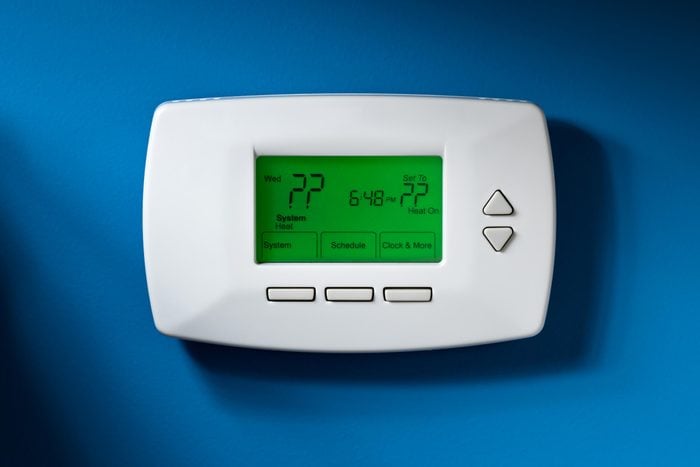Preparing your home for winter can bring feelings of stress and an urgency to be prepared. But no matter how prepared your home is, you will still need to decide about the temperature at which to set your thermostat. The ideal thermostat temperature in the winter is 68 degrees Fahrenheit when you’re at home. Energy.gov suggests that 68 degrees is a good room temperature while you’re awake at home but recommends lowering it while you’re asleep or away.
The right home temperature in winter
Lowering your thermostat 7-10 degrees for eight hours a day can reduce your annual heating expenses by as much as 10 percent. That’s a potential savings of as much as 1 percent for each degree if the if the temperature is lowered for at least eight hours. EnergyHub says that for each degree you lower your heat, you can save 3 percent or more on heating costs. Popular Science agrees 68 degrees is a normal temperature for the winter and suggests layering clothing as a way to stay warm in the cooler house temperature.
A detailed study from the National Renewable Energy Laboratory found residents preferred a wintertime heater setting between 67 °F and 70 °F (19 °C to 21 °C). The Department of Energy recommends a winter heat setting of 68 °F (20 °C), which matches up very well with the comfortable temperature for most people. Set the winter temperature to 68 degrees when you’re awake and 62 degrees when you’re sleeping.
What temperature should you keep your house at?
Or better yet, “What is the most energy saving temperature to set my thermostat at?” According to ENERGYSTAR.gov, the ideal home temperature should be between 70 to 78 degrees Fahrenheit. To maximize energy efficiency, turning your thermostat up or down by 8 degrees while you’re away from your home can help reduce your heating and cooling costs.
Low indoor temperatures
Most of the evidence for the impact of cold on health comes from studies connecting outdoor temperatures to health outcomes. For example, cold spells are associated with increased mortality and respiratory and cardiovascular morbidity (207), and mortality and morbidity rates in countries with cold and temperate climates are higher in winter than in summer (208). Evidence that cold indoor temperatures have adverse consequences for health is growing (209, 210). Cold indoor temperatures are often a consequence of outdoor temperature, structural deficiencies, including a lack of insulation and airtightness, and lack of heating.
Cold indoor temperatures have been associated with increased blood pressure, asthma symptoms and poor mental health. Cold homes contribute to excess winter mortality and morbidity. Most of the health burden can be attributed to both respiratory and cardiovascular disease, especially for older people. In children, the excess winter health burden is mostly due to respiratory disease. Excess winter deaths due to cold housing has been estimated at 38 200 per year (12.8/100 000) in 11 selected European countries (18).
Winter mortality is greater in countries with milder climates than in those with more severe winter conditions (211), in part because countries with mild winters often have homes characterized by poor domestic thermal efficiency that are harder to heat than well insulated houses in more extreme climates. In insulated dwellings, thermal insulation reduces conductive heat loss through the buildings’ walls, ceilings and floors. Retrofitted insulation, otherwise known as “weatherization,” also reduces convective heat loss by blocking unwanted air leaks through the building envelope. Retrofitted insulation, weatherization, and heating can help mitigate the effect of otherwise cold housing on health.
Contact Us TALK TO A TRUSTWORTHY HVAC COMPANY
If you have an upcoming HVAC project, join hands with a licensed and insured contractor at East Coast Mechanical. Email: ecmcecmc@aol.com Address: 5133 W Hurley Pond Rd Suite A, Wall Township, NJ 07727 Hours: Monday to Friday 8 AM to 5 PM and Closed Saturday and Sunday.
Phone: 800-300-ECMC or 732-751-8877

